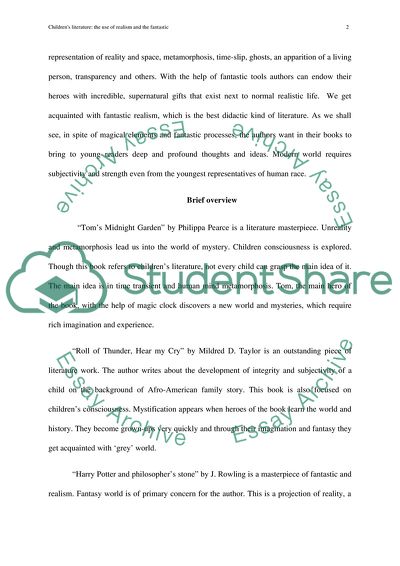Cite this document
(Children's Literature - The Use of Realism and the Fantastic Assignment, n.d.)
Children's Literature - The Use of Realism and the Fantastic Assignment. https://studentshare.org/literature/1732235-childrens-literature-discuss-and-compare-the-use-of-realism-and-the-fantastic-in-2-or-3-of-the-set-books
Children's Literature - The Use of Realism and the Fantastic Assignment. https://studentshare.org/literature/1732235-childrens-literature-discuss-and-compare-the-use-of-realism-and-the-fantastic-in-2-or-3-of-the-set-books
(Children'S Literature - The Use of Realism and the Fantastic Assignment)
Children'S Literature - The Use of Realism and the Fantastic Assignment. https://studentshare.org/literature/1732235-childrens-literature-discuss-and-compare-the-use-of-realism-and-the-fantastic-in-2-or-3-of-the-set-books.
Children'S Literature - The Use of Realism and the Fantastic Assignment. https://studentshare.org/literature/1732235-childrens-literature-discuss-and-compare-the-use-of-realism-and-the-fantastic-in-2-or-3-of-the-set-books.
“Children'S Literature - The Use of Realism and the Fantastic Assignment”. https://studentshare.org/literature/1732235-childrens-literature-discuss-and-compare-the-use-of-realism-and-the-fantastic-in-2-or-3-of-the-set-books.


